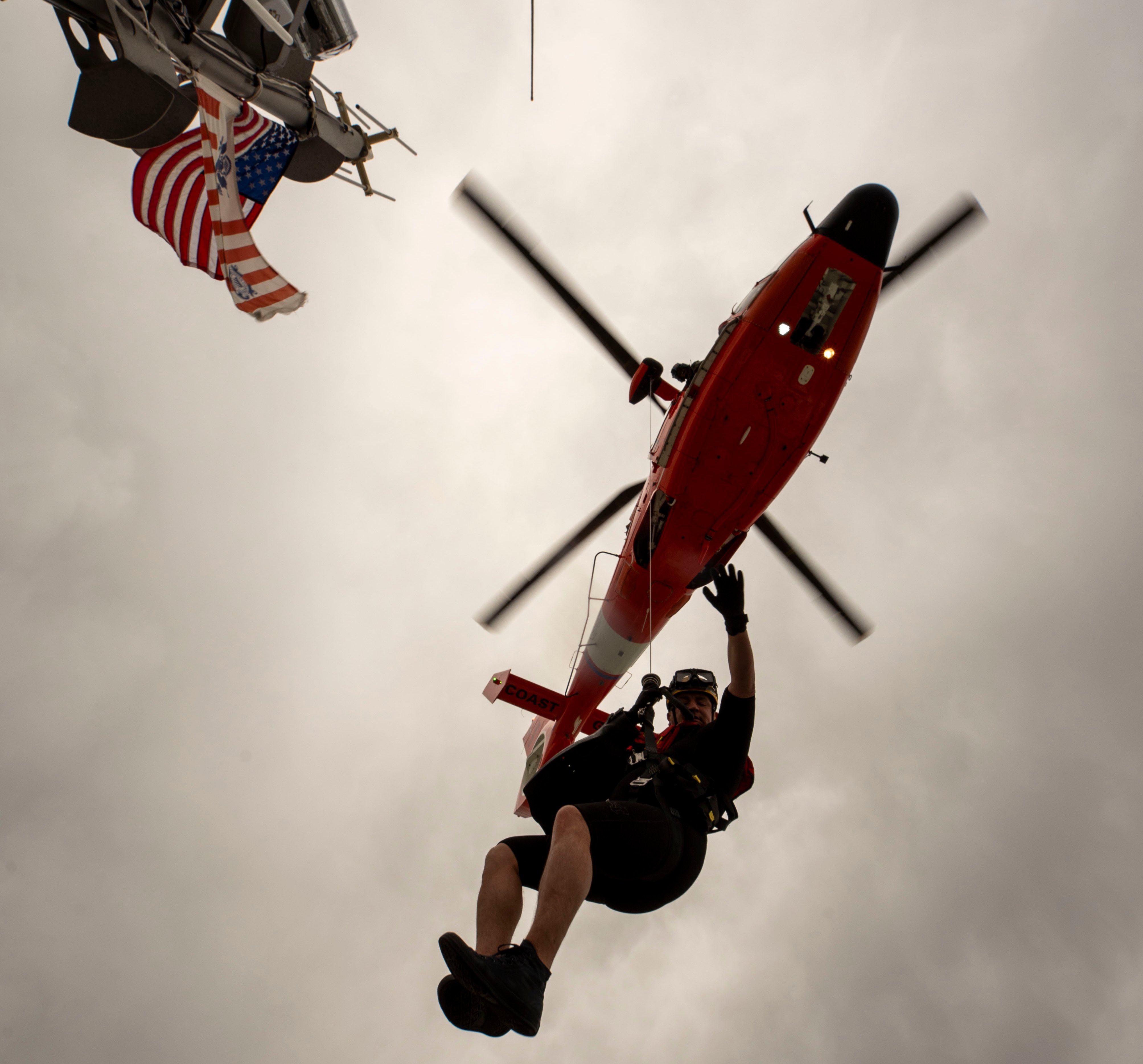
The Navy and the Pentagon are crunching numbers on two separate sets of studies that will map out the size of the service’s future fleet as defense budgets are set to stay static for the foreseeable future, officials familiar with the studies told USNI News.
The Navy is performing its own assessment of the fleet architecture needed to counter future threats past the Fiscal Year 2024 budget, while the Pentagon’s Cost Assessment and Program Evaluation (CAPE) is also evaluating the fleet design for the FY 2023 budget that will come out early next year.
“There’s two separate efforts going on. The Navy’s got one effort going on for force design. And they’re calling it a strategy and force design effort. And then CAPE has got their own project going as part of program budget review – evaluate the force structure – as more of a near-term thing to support the [Fiscal Year] 23 budget submission. So the Navy’s effort is more of a longer-term look at force design,” Hudson Institute senior fellow Bryan Clark told USNI News. “CAPE is more focused on what’s going to be in the FY 23 budget that comes out in February of next year, which will be like the [Future Years Defense Program], basically.”
The efforts come as defense officials continue to predict flat or declining budgets in the coming years that will make it difficult for the Navy to build toward its goal of a larger fleet to maintain an edge over China in the Indo-Pacific.
The approach to the studies aligns with Navy and Marine Corps officials’ argument that the force structure assessment – which evaluates the quantity and types of Navy ships for the fleet – should be an iterative process that builds on prior analytical work while taking into account new threats and problem sets.
“This is part of that iterative ongoing analytic cycle. So the FY 23 budget is already sent over to [the Office of the Secretary of Defense], CAPE is doing their analysis to support the FYDP that will go with that FY 23 budget, and then the Navy’s continuing on with its longer-term force design analysis,” Clark said.
Chief of Naval Operations Adm. Mike Gilday earlier this month said the Navy needs to reassess its force structure assessments every 18 to 24 months to ensure the analytical work remains relevant to ongoing threats.
“What’s China doing principally? What’s Russia doing? What did we learn from things like Large-Scale Exercises? We’re about to do another global war game this fall. We’re doing analysis all the time. There’s a number of war games that we do every year. What are we learning from those games or that analysis? What are we learning from those fleet battle problems that we’re doing with every deploying strike group and ARG? Pulling all that together and integrating that into a turn of a force structure assessment to give us a better understanding,” Gilday said during a forum hosted by Defense News on Sept. 8.
“To refine that, you know, let’s say every other year on a biannual basis, I think that’s an important – I think that’s important because that is one big input into the shipbuilding plan that we provide Congress.”
The Biden administration’s FY 2022 budget submission did not include a fleshed-out 30-year shipbuilding plan, nor did it have the usual five-year budget outlook. Instead, the 30-year shipbuilding blueprint included ranges of ships the Navy could buy for each type of vessel.
“I would assume based on what they’ve said and what they have to get done is since they owe a shipbuilding plan – they owe a 30-year shipbuilding plan with the budget in February – that’s the goal is to marry up what they’ve got for the longer term with what comes out of the budget process that CAPE currently has the control over,” Clark said. “So you kind of have to marry those two things up at the end. So what I would imagine is is that the FY 23, maybe the FYDP, is sort of locked in and then the question is, well what does the force structure look like after that. And that’s what this effort is probably intended to do.”
The Navy is also using its recent Large Scale Exercise, which the service recently used to test out its operating concepts, to inform the 30-year shipbuilding plan,” Gilday said during the Defense News forum.
“My priorities haven’t changed, at least during my tenure, in terms of Columbia, readiness, capabilities, and capacity,” he said. “So I’m taking the analysis that we have with respect to requirements, I’m taking those priorities that I’ve explained many times, and then I’m injecting the reality of the budget that we receive, or the budget we are projected to receive over the fall. And so that ends up influencing the 30-year shipbuilding plan. And again, that not only – that’s grounded on requirements, but it also has a high degree of affordability integrated into it.”
In addition to evaluating the fleet architecture, the Pentagon is also performing a global force posture review and a reassessment of the National Defense Strategy.
“The Global Posture Review will be a part of a bigger puzzle. The Secretary of Defense is aiming for 2022 for the release of an updated National Defense Strategy that should give us additional guidance in terms of how the globe is going to be postured, how he sees us in the competition phase, and then poised for potential crisis against China,” Gilday said last week at the International Seapower Symposium at the Naval War College in Rhode Island.
Gilday said he expects the updated NDS to alter the global force posture across both domains and regions.
“It should also give us probably more refined guidance on what our investment strategies need to look like going into the future. I think that is an example [is] carrier strike groups. One of the things that the 2018 NDS changed was to create a supply-based and not a demand-based model. In the past, it really was a demand-based model driven by the combatant commanders. Now it’s a top-down approach, it’s supply-based,” Gilday said.
“The Secretary of Defense takes a look at the challenges across the five problem sets – Russia, China, Iran, North Korea and violent extremist organizations. And then he makes a determination of how the globe is going to be postured against those across those five problem sets and across the spectrum of warfare, everything from peacetime to conflict,” he added. “It gives him the ability to say, ‘Well, I need X amount of aircraft carriers deployed on an on a daily basis and I need, Y a number of aircraft carriers strike groups ready to get underway in let’s say 30 days or 60 days, and that’ll give us direction with respect to how much readiness we need to resource in the coming years.’ What we’ll see out of the NDS, we’ll see more structure with respect to what the readiness of the force of the joint force looks like in the future.”
The multiple reassessments come as the Biden administration continues the push toward a strategy that emphasizes China and seeks to counter Beijing in the Indo-Pacific.
Before former President Donald Trump left office, the White House in December 2020 issued a long-awaited 30-year shipbuilding plan that called for a significant boost to shipbuilding to counter China.
The Hudson Institute last year performed a fleet study that was one of three inputs for an Office of the Secretary of Defense-led effort under the Trump administration to create a future fleet design. The Navy and Marine Corps under the Trump administration also had been working on an Integrated Naval Force Structure Assessment, which was one of the three contributions to the Pentagon’s effort.
The same analytical work influenced both the Trump administration’s December 2020 shipbuilding plan and the Biden administration’s Fiscal Year 2022 shipbuilding ranges earlier this year, Clark said.
“There was a version of that [Trump] shipbuilding plan and force structure that was based on the analysis that didn’t look exactly like Battle Force 2045,” Clark said. “So they took all that analysis and then just built the Biden plan, so the Biden plan looks a lot like kind of what we were thinking of for the Battle Force 2045 before the [Trump] White House got a hold of it.”





